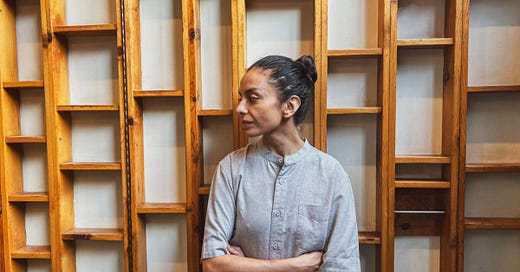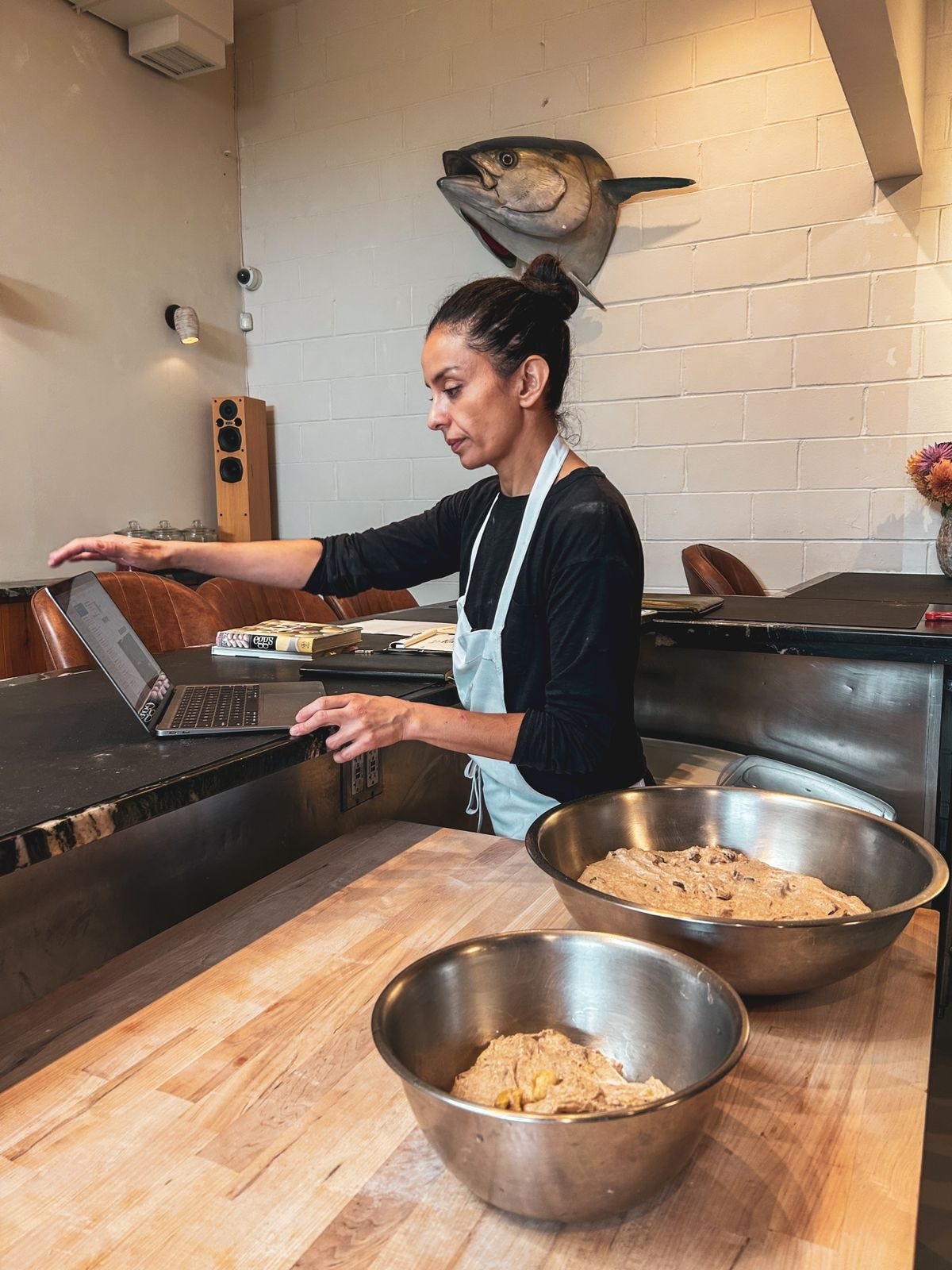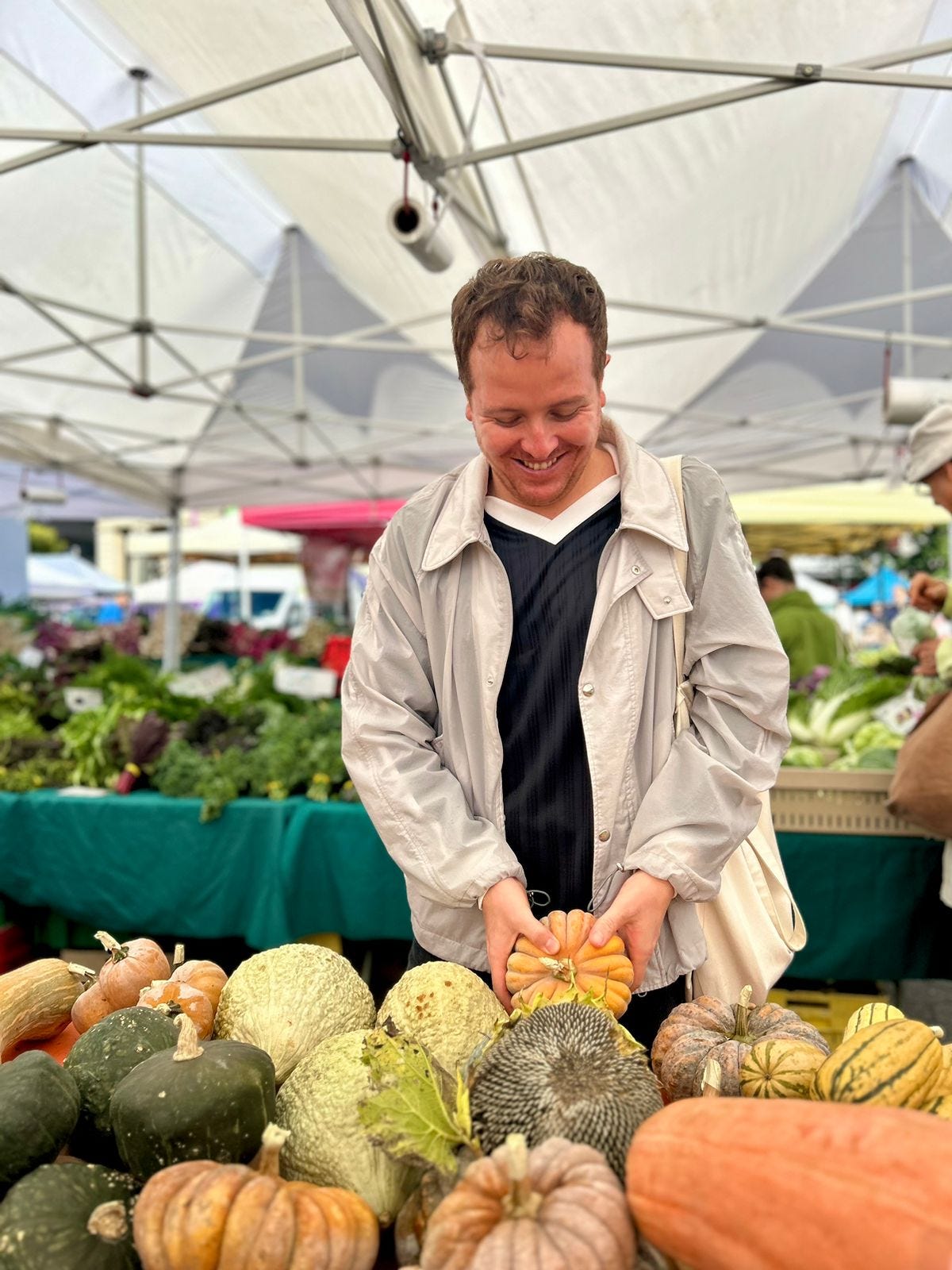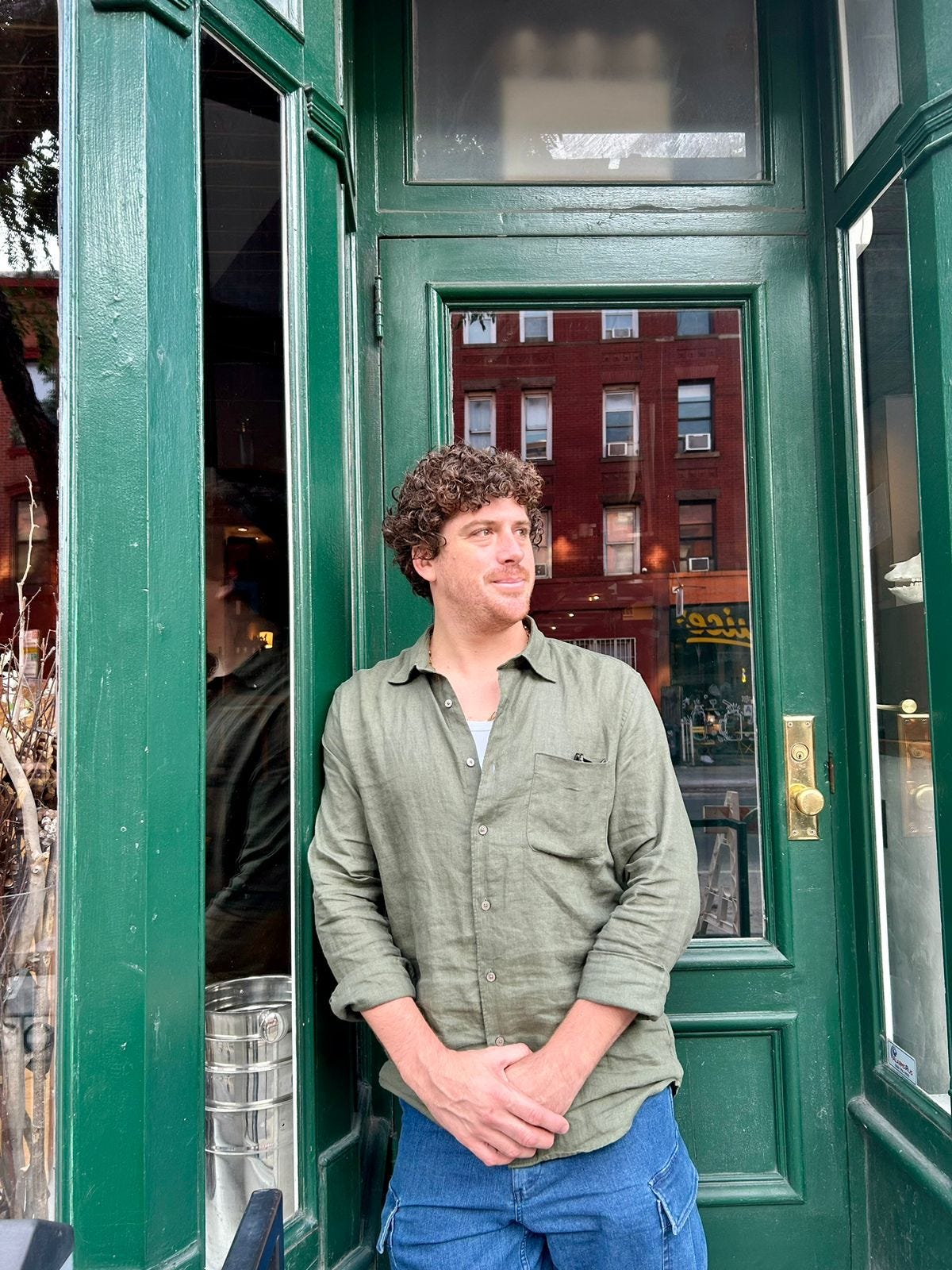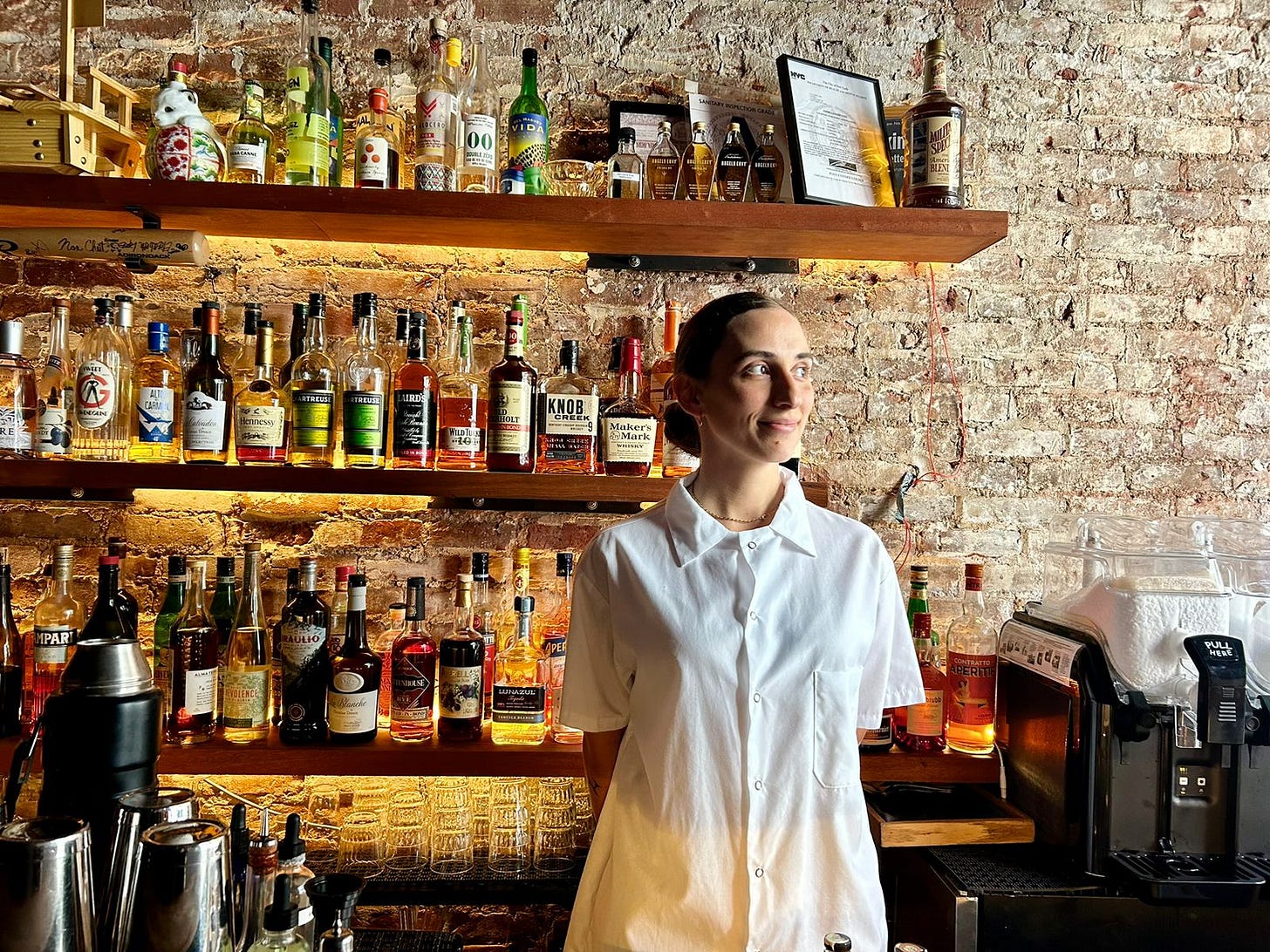The lives of four Chilean chefs thriving in New York’s fine dining scene
Almost all were trained at Boragó in Santiago and in Michelin-starred kitchens across Europe, Australia, and South America. They came to New York to try their luck in pursuing the same dream: opening
Happy New Year, all! To kick off 2025, I wanted to share one of my latest published articles with you about the Chilean stamp in NYC's fine dining industry. Get to know the personal journeys of these inspiring figures!
*This is the English version; if you want to read the published Spanish original version, click here.
Rising after a closure
Nothing on the afternoon of Friday, September 6, suggests that Blanca, a restaurant led by a Chilean chef, is the second-best restaurant in New York, according to the latest annual ranking by the New York Times (NYT).
Far from the frenzy of Manhattan and the lights of Times Square, behind an old pizzeria in Bushwick, a Brooklyn neighborhood, lies a spot with no street access, reachable only by reservation. There, in an open kitchen, chopping and peeling mushrooms to mix them with a bread preparation, is Victoria Blamey, 44, the executive chef.
“Did you think chefs didn’t do this kind of work?” she laughs. “Here in New York, you do it all.”
Blamey expected nothing on the night of Monday, April 1, when renowned NYT critic Pete Wells published the annual list of the 100 best restaurants in New York and her restaurant was in there. She expected nothing because Blanca had only been reopened for four months. After all, the closure of her last restaurant, Mena, had taught her that nothing good came from setting expectations too high.
Sitting in her apartment in Brooklyn Heights, a neighborhood on the outskirts of Manhattan, working on her computer and waiting for her partner to be ready to go out for dinner, she received a message from a friend sharing the article’s link. When she opened it, she got prepared to scroll to the bottom and find nothing about her restaurant. But it only took the first-page loading to see it: of the 100 best restaurants in New York, hers was ranked second in the city.
Victoria Blamey’s professional track record had been so promising that opening her own restaurant in one of the most competitive culinary cities didn’t seem like a crazy idea. The Chilean chef, a graduate of the International School of Culinary Arts in Santiago, had worked in fine dining restaurants in London, Australia, and Spain. She arrived in New York in 2010, accompanying her ex-husband. However, she quickly took various kitchen positions in Michelin-starred tasting menu venues, working with globally recognized chefs.
The best example of her rising reputation was the reviews occasionally written by the same NYT critic, Pete Wells: “Ms. Blamey cooks tavern food never before seen in any tavern on this planet. She is a chef worth following,” he wrote in a 2017 article about Chumley’s, one of the places she worked.
In 2022, one of her regular clients made her a proposal: to invest in her talent and open a restaurant with her personal touch.
“Mena was that: a unique and intense project where I tried to leave my stamp beyond just the food—from the service style to the music and cocktails.”
But the place wasn’t even open for six months before she was told it would have to close due to a lack of capital.
“I found out that same week that there was no more money. The closure came overnight, so I had to reinvent myself. I even considered leaving New York and listening to opportunities that came up abroad, but I didn’t want to.”
In April 2023, another investor approached her with a proposal to reopen Blanca, a Michelin-starred restaurant offering tasting menus for 12 years before closing at the start of the pandemic.
Today, nine months after its reopening, Blamey leads the fine-dining venue that offers a 15-course menu for nearly $300,000 per person. She says she feels satisfied with what she has achieved, even if it comes with costs such as working from 9:00 AM to 2:00 AM almost every day.
“This industry toughens you up by necessity, not just because in a city like this you never stop, but also because you often set your personal life aside.”
And what’s different about doing fine dining here compared to other places?
“It’s a business. This isn’t Spain or some remote place in France where nobody cares about making money. Suppose you don’t sell, you close. It’s as simple as that.”
New York: an industry that gives little and takes off much
“This is where all the chefs converge. If you want to know gastronomic trends, you can’t miss coming here, even though it’s tempting to order your products through apps sometimes.”
Speaking is Francisco Castillo, 36, the executive chef of Llama San, a West Village restaurant fusing Japanese and Peruvian cuisines. He is at the Farmers Market, held every Wednesday and Saturday in Union Square, one of New York’s most popular plazas.
At this market, Castillo explains while selecting red chilies from one of the stalls, chefs buy from their suppliers, who come from various parts of the city. They also study trends in seasonal products and what’s coming next. It’s the best place to debunk what he considers one of the biggest myths in this industry in a city like New York: that there’s no good produce here.
His arrival in New York in 2021 also forced him to confront other myths, such as the idea that fine dining is an art that must be perfected regardless of the cost.
“It’s not as romantic cooking here as in other cities; I had to come to terms with that,” he says.
Manhattan’s costs are the main course on the menu. That’s why Castillo had to learn about numbers first before anything else upon arriving.
After graduating from the French Culinary School Ecole and doing a couple of internships at Da Carla, Osadía, and Ritz restaurants, his first international culinary experience was washing radishes for a fine dining restaurant in Sydney, Australia.
He then worked in restaurants in Denmark, Spain, and back in Chile, where he spent two years at Boragó under chef Rodolfo Guzmán’s mentorship. While applying for jobs abroad and sending emails, he got an offer from Llama San and was selected, eventually moving to the U.S. with a unique talent visa.
“It’s been three years of success but also frustrations,” he says.
“One of those is realizing that this profession gives little but takes much. My personal life has often come second, and it’s tough to do things like telling your partner you can’t continue because of work. In the end, this city always demands you keep up.”
The second season of The Bear series, about a fine dining chef in Chicago, is a good portrayal of what this industry looks like, says Castillo after watching it.
“It shows very well the emotional and affective disconnection that happens when you’re so focused on work and disconnected from your personal life.”
But unlike Chicago, New York adds another ingredient: an endless sea of culinary options, making competition even more overwhelming. Castillo concludes:
“New York is a completely different animal from anywhere else.”
The curator of culinary talent
Francisco Pedemonte, 35, arrived as a chef in the city, much like other cooks. Saying he had spent four years at Boragó, worked at Lasai in Rio de Janeiro, and Rafael in Lima was undoubtedly impressive and opened doors.
The opportunity to come to New York went like this: after sending an email applying for a kitchen position at Contra, he was invited to trial for a week and stayed. For fine dining, trying out is always an option, he explains. The challenge is staying.
The pandemic, however, changed his plans. After six months at the restaurant making menus for hospitals, he got a job as a private chef in the Hamptons, a seaside resort outside the city. An Ecuadorian family who had dined at Contra and asked about the chef after eating a dessert with cheerful cherimoya reminiscent of their country’s flavors hired him.
“I was lucky to work with a good family interested in food beyond routine. Being a private chef is complex because family dynamics are challenging. You’re an element that must be present but not make noise and must be functional without being overexposed.”
After a few months, he began working at Laundromat in Brooklyn, part of the French Fulgurances chain offering a unique gastronomy concept. Here, chefs rotate every three months, functioning as a talent incubator.
“We’re basically like an art gallery where chefs come to showcase their cuisine for a period and then leave. So, you’ll never find the same menu here.”
Pedemonte supervises these residencies, has seen over 36 chefs pass through the restaurant, and has become a sort of curator for those who come to showcase their work. However, the concept is not always for those looking for viral food experiences found on social media.
“In this city, trends are very strong, and viral content significantly impacts a restaurant’s organic movement. It’s ungrateful because, in the end, it’s better to pay a community manager than to invest in a good product.”
They experienced this initially. When Laundromat started, it became trendy, mainly because it was near Williamsburg, a fashionable Brooklyn neighborhood, and offered a different culinary concept. Pedemonte says people would come asking for the viral dish they had seen on TikTok, but that preparation was no longer available because the chef who made it had finished their residency, frustrating customers.
“We aim to build a local economy, and people have started understanding our concept better. But some restaurants build their economy based on social media presence. The problem is that you lose customers if you stop being trendy.”
After three years at Laundromat, this is Pedemonte’s last week at the restaurant. His next plan is challenging: opening his own restaurant in New York.
“I already have a client base that knows and likes my work, I know how a restaurant operates, and I have my suppliers. All I need now is to leap.”
The less friendly face of New York cuisine
When she started working at a contemporary Michelin-starred restaurant in West Village, Ignacia Valdés, 29, encountered the darker side of the gastronomic industry. She came from working and studying gastronomy in Paris, where the standards for a pristine kitchen were much higher than anywhere else. So, when she auditioned, a simple task—organizing food in the cold storage—was enough for the team to understand where she was coming from.
Everything was fine until they told her she was hired but couldn’t start without first processing her visa. This required her to return to Chile and wait for the paperwork, leaving her stranded for nine months, unable to enter the U.S. During that time, she dreamed confidently about what she had achieved and what it would be like to work for a Michelin-starred restaurant in New York.
When she returned in 2021, her papers in order, she was ready: she had spent nearly a year in Chile preparing and testing recipes with different ingredients, had her work contract, and was renting an apartment with two friends in Williamsburg, Brooklyn. But after just a month of working, she realized her boss’s management style was not what she had seen in Paris. Here, respect was earned through fear.
Valdés says the mistreatment she suffered at work from the executive chef was daily and constant, from public humiliations to sabotages, like turning off the burners where she was cooking fish just before serving.
“I entered this toxic cycle where I didn’t want to leave because when things went well, the reward and recognition were immense. I had a very special relationship with the other chef centered around creativity, so I didn’t want to let that go.”
There were also days when, if the chef was angry with Valdés, no one on the team would speak to her out of fear of reprisal. Punishments included removing responsibilities and cutting hours to lower her pay.
“Everything operated under terror. At the same time, that restaurant had good finances, so the balance was a good salary, creative freedom, and benefits like days off—but at a cost, I eventually couldn’t bear.”
When Valdés reached the point of deciding to leave, something always happened that kept her there for three years: promises that things would change, public apologies from the executive chef, and pay raises.
That lasted until last year when the chef from Contra contacted her to discuss a reopening—this time, not of a fine dining restaurant like before but of a cocktail bar with a tapas menu.
Valdés took the opportunity, especially because her role would no longer be just cooking but managing the entire operation, tasks she needed to learn to fulfill her dream of opening her own restaurant, which remains her current goal.
She has been at Contra for just over a year and says she is finally enjoying the perks of working in New York.
“The cultural diversity. Nobody here is really from New York; everyone you meet has a background and something new to offer, which allows you to learn wherever you go.”
As for her past at the West Village restaurant, she doesn’t want to think about it again or relate to anything resembling it, such as the series The Bear, which has a scene where—just like her—the chef’s stove is turned off right before plating a dish.
“I haven’t wanted to watch it. I think it would give me PTSD.”

